Who Was Paul Farmer?
The Man Who Carried Coffins: Why Paul Farmer Still Haunts Us
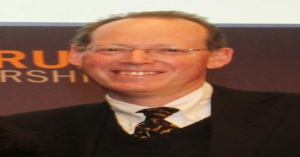
You could smell Haiti on him.
Not perfume, not antiseptic – but earth. Dust from mountain footpaths, woodsmoke from charcoal stoves, the faint tang of sweat from walking miles in the humid heat to see a single patient. That’s how Dr. Paul Farmer would show up at fancy Harvard conferences: rumpled khakis, a worn backpack slung over one shoulder, and the scent of a place most attendees only read about in reports.
He wasn’t just a doctor. He was a walking reproach.
A reminder that while we debated “cost-effectiveness” in air-conditioned rooms, real people – people with names like Jean-Claude and Florence – were dying of stupid, preventable things right now because they were poor.
The Night That Forged Him
Picture Cange, Haiti, 1985. A young Paul, barely out of med school, is called to a hut clinging to a hillside. Inside, a woman is dying in childbirth. Eclampsia. Her blood pressure is skyrocketing. She needs magnesium sulfate. Now.
But there is none. Not in this clinic. Not anywhere reachable before dawn.
He holds her hand. He watches the light leave her eyes. He delivers her stillborn baby by lantern light.
“It wasn’t for lack of knowledge that killed her,” he’d say later, voice tight with a fury that never really left him. “It was less of imagination. Lack of will to get the right tools to right place.”
That night didn’t break him. It lit a fuse. He vowed: Never again. Not on my watch.
“Mèt Kòk” (Master Rooster) in the Mud
In Haiti, they called him “Mèt Kŏk” – Master Rooster. Not because he crowed, but because he never, ever stopped moving.
You’d find him:
- At 4 AM: Scrubbing the floor of the clinic in Cange because the cleaner was sick.
- By Noon: Performing surgery, his glasses fogged with sweat.
- At Dusk: Haunting the hills with a backpack full of antibiotics, chasing down a TB patient who’d missed an appointment.
- Deep into Night: Typing furious emails to drug companies or donors, demanding cheaper meds, more funds, faster.
He didnot saint. He was exhausting. He’d forget meals, sleep on floors, push colleagues to their limits with his relentless “What else can we do?” His own health? Often an afterthought.
“Rest is a weapon of the rich,” he’d joke darkly.
The Revolution Was Built by Grandmothers

Paul’s genius wasn’t just medical. It was human.
So he knew a fancy American doctor parachuting in was useless. The real magic? The grandmothers.
He hired them. Trained them. Paid them. Called them “accompagnateurs” – companions.
- Marie-Marthe, a widow who lost two sons to AIDS, became an expert in HIV meds. She’d walk 3 hours uphill, sit with a scared young mother, crush pills into porridge, hold hand. “You eat. You take this. You live for your baby.”
- Old Jean-Pierre, crippled by polio, became the TB tracker. He knew every hidden footpath. He’d find the missing patient, not to scold, but to ask: “What stopped you? No food? No bus fare? The landlord locked you out?” Then he’d fix it.
This was Paul’s secret: Medicine only works when it’s wrapped in dignity, delivered by someone who knows your name, your kids, your struggles.
He didn’t build a charity; he built an army of neighbors healing neighbors.
The Phone Call That Shook the World
2001. The AIDS plague is swallowing Haiti. Big global health agencies say: “Antiretrovirals (ARVs) in places like this? Impossible. Too expensive. Too complex. They won’t take the pills.”
Paul storms into his tiny office in Cange. He’s furious. He picks up a clunky satellite phone.
“Hello? Cipla Pharmaceuticals? India? This is Paul Farmer in Haiti… Yes, HAITI. Listen, your drugs cost $20,000 a year here. My patients earn $200 a YEAR. That’s a death sentence. We need generics. NOW. What’s your REAL cost? …$350? We’ll take it. No, I don’t have the money yet. But I WILL.”
He hung up. He started begging donors. He leaned on friends. He shamed governments.
- Within a year, the price plummeted to $80.
- Within two years, his accompagnateurs proved Haitians took their pills better than patients in Boston.
The “impossible” became routine. Millions lived because one stubborn man in a muddy clinic refused to take “no” for an answer.
The Weight Paul Farmer Carried
It was not all victories. The losses carved canyons in him.
- Carrying Tiny Coffins: After a cholera outbreak he couldn’t stop fast enough.
- The Fury: Walking past gleaming, empty hospitals in Port-au-Prince built after the earthquake, while his patients in Cange still waited in tents. “Architectural malpractice!” he’d roar.
- The Doubt (Rarely shown): Late one night, over bad coffee, he might murmur: “Are we even making a dent? The tide feels so strong…” But by dawn, he’d be back on the trail, backpack heavy with meds.
Why he Still Walks Among Us (February 21, 2022)
He died in his sleep. In Rwanda. On the grounds of the beautiful Butaro Hospital he helped build in hills once soaked in blood during the genocide. Poetic. Perfect. Devastating.
The world wept. But if you listen, you can still hear him:
- In Butaro’s Cancer Ward: Where a Rwandan nurse gently explains chemo to a farmer who once thought cancer was a curse. World-class care. In the hills. Because Paul insisted.
- In Zanmi Lasante, Haiti: Where Janine, herself once cured of TB, now rides a motorcycle (paid for by PIH) to reach six remote patients before lunch. Accompaniment. In action.
- In Medical Schools: Where a tired student reads Farmer’s books and thinks: “Screw ‘lifestyle specialties.’ I’m going where I’m needed.”
- In You: When you see someone suffering and think “That’s not right,” and instead of looking away, you ask: “What can I carry?”
Paul Farmer Real Prescription
Paul Farmer didn’t just treat diseases. He treated indifference.
He diagnosed complacency.
His medicine was radical, inconvenient, expensive love.
He showed us that “health for the poor” isn’t about charity drops from a great height.
It’s about getting down in the dirt.
It’s about listening – truly listening – to the woman trembling in fear.
It’s about paying the grandmother, trusting the farmer, fighting the drug company, and yes, sometimes scrubbing the damn floor yourself.
It’s about refusing, with every fiber of your being, to believe that any life is worth less than another.
That’s why he haunts us.
Because the work isn’t done.
The backpack is heavy.
The trail is long.
And somewhere, right now, another Marie-Therese is waiting.
Pick it up.
Start walking
Mary Seacole: The Crimean War’s Forgotten Nurse Who Defied Racism & Saved Soldiers
PROLOGUE: THE DOLL THAT TAUGHT HER

Kingston, Jamaica 1812
Seven-year-old Mary Seacole small fingers trembled as she pressed damp moss against her rag doll’s chest. Outside Blundell Hall, tropical rain hammered the roof while her mother tended a British soldier sweating through yellow fever.“Breathe for Mama, dolly,” Mary whispered, copying her mother’s motions. She didn’t know then how this childhood game would save lives decades later in the Crimean frost. Nor how the world would try to break the healer inside her.
THE SCENT OF HEALING (1805–1836)
Kingston’s Rhythm
Before dawn, Mary’s bare feet slapped against cool clay floors as she helped grind cinnamon bark. The air hung thick with the sweetness of guava jam simmering for British officers’ breakfast. Her mother’s voice, low and musical, instructed: “The fever bush needs moonlight harvesting, child. Its power sleeps by day.”
First Blood
At twelve, she assisted with her first childbirth. The enslaved woman’s grip crushed Mary’s hand as screams tore through the night. When the tiny body emerged silent, Mary watched her mother breathe life into the infant with mouth-to-mouth—a forbidden African practice. The baby’s first cry made Mary’s knees buckle with relief.
The Crossing
1821: Her first Atlantic voyage. For 45 days, 16-year-old Mary retched in the ship’s belly, clinging to jars of jerk seasoning to sell in London. White passengers recoiled from her touch. “I felt their stares like physical blows,” she’d confess later. Yet in a storm that cracked the mainmast, it was Mary who calmed vomiting children with ginger tea.
BONES IN THE RUBBLE (1836–1851)
Edwin’s Hands
Her wedding day: Edwin Seacole’s calloused palm enveloping hers at Kingston’s Holy Trinity Church. He ran a merchant store, eyes crinkling when she experimented with pimento liqueurs. Their private joke: “My restless bird—will you ever stop flying?”
The Fire Season
1843: Drought parched Jamaica. One spark, and Blundell Hall became an inferno. Mary stood barefoot in the street, Edwin’s wedding ring searing her breast pocket as flames consumed her childhood home. She’d later write: “The heat on my face felt like God’s punishment.”
Grief’s Anatomy
Edwin wasted slowly—consumption or heartbreak? For months, Mary pounded yams into paste because he couldn’t swallow solids. The morning she found him cold, she crawled into his coffin-shop’s sawdust pile and didn’t move for two days. Only the wail of a cholera orphan finally roused her.
Panama’s Lesson
1850: Cruces, Panama. Mary trudged through mud to a shack where her brother lay shivering. “It’s just ague,” he insisted. By midnight, his skin turned porcelain blue. Mary’s fingers found the swollen lymph node at his groin—buboes. Plague.
The Autopsy
The orphan boy’s body lay on palm fronds. Mary’s knife hesitated. “I’m sorry, little one,” she whispered, making the first incision. Inside, the intestines were rice-water white. She’d later write: “That child’s sacrifice taught me cholera starts in the gut. I never forgot.”
THE NO THAT CHANGED HISTORY (1854)
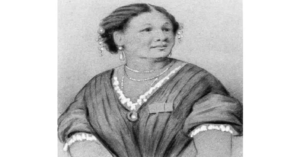
War Office, London
Rain slicked the cobblestones as Mary climbed the steps. Inside, a clerk sniffed at her Jamaican reference letters:
“Nightingale’s nurses are ladies of refinement.”
“I’ve dressed wounds since you were in leading strings, sir.”
His pen tapped the rejection ledger. “The Crimea is no place for… colonial women.”
Four Rejections
- Florence Nightingale’s Team: “Full, thank you.”
- War Office: “Unnecessary.”
- Crimean Fund: “We don’t sponsor civilians.”
- Nursing Society: Silence.
That night in a Lambeth boarding house, Mary stared at her reflection—a 49-year-old woman with greying hair and hands still stained with Panama’s clay. “Very well,” she told the mirror, “I’ll buy my own passage.”
Mary Seacole : A HOME IN HELL (1855–1856)
Building Dreams on Driftwood
Near Balaclava harbor, Mary nailed salvaged ship timber into walls. Thomas Day, her business partner, gaped as she traded pearl earrings for a rusty stove: “That’s your last jewelry, Mary!”
She shrugged: “What good are baubles to frozen boys?”
A Typical Day
- 5 AM: Kneading dough with chilblained hands
- Noon: Racing to the front with lint bandages soaking in her skirts
- Dusk: Pressing wet cloths to a sergeant’s typhoid brow
- Midnight: Writing to a dead soldier’s mother: “He spoke of your rhubarb pies at the end…”
The Battle of Redan: June 18, 1855
Cannon smoke choked the valley when Mary heard the cry: “Bailey’s down!”
She hitched her medic bag and ran.
“Mother, no!” shouted a lieutenant.
Bullets whined like mad hornets. She found 19-year-old Thomas Bailey from Dorset—his thigh pumping blood where shrapnel tore flesh.
“Look at me, Tommy!” she commanded, stuffing the wound with moss.
As she hauled him downhill, Russian grapeshot shredded her skirts. “Nearly there, lad,” she panted, tasting gunpowder and her own fear.
Mary Seacole Winter’s Cruelty
January 1856: The Hotel’s water barrel froze solid. Mary melted snow in her mouth to moisten dying lips. One night, she gave her wool cloak to a shivering sentry. Frost crystallized her hair as she wrote: “My bones ache like an old tree in a hurricane.”
Mary Seacole :DEBT AND THE DAWN (1856–1881)
Mary Seacole Bankruptcy
The peace treaty left Mary with £2,000 in debt (≈$300,000 today). Creditors seized her remaining spoons and kettles. In a dank London room, she stared at unpaid bills: “All that work… for this?”
The Soldiers Remember
When The Times reported her plight, veterans rallied:
- Sgt. Michael O’Leary (whose leg she saved): Organized a 4-day benefit
- Pvt. William Johnson: Walked 80 miles on a wooden leg to donate his pension
- 80,000 Londoners: Flooded Surrey Gardens in 1857, tossing coins into her apron
The Memoir No One Wanted
Publishers rejected her manuscript: “Who reads Negro women’s tales?” She self-published “Wonderful Adventures” in 1857. The dedication stung: “To British Sons Who Suffered Needlessly.”
Final Years
In Kingston, aging Mary still treated street urchins’ scrapes. Days before her death in 1881, she burned letters from a suitor—a French diplomat. “My heart belongs to my soldiers,” she told her cat, Purr.
EPILOGUE: Mary Seacole HANDS REACH
London, 2024
At St. Thomas’ Hospital, a Jamaican nurse touches Mary’s bronze skirt. “You’re why I wear this uniform,” she whispers. Downriver, Florence Nightingale’s statue gazes toward Mary’s back—a silent correction of history’s gaze.
Why Mary Seacole Humanity Resonates
| Her Struggle | Modern Echo |
|---|---|
| Rejection by institutions | Black nurses facing discrimination today |
| Medical innovation | Folk healers in war zones |
| Dying destitute | Crowdfunded healthcare workers |
| Unseen labor | Immigrant caregivers |
Mary Seacole Ginger Tea Ritual
Some NHS nurses still sip ginger tea during breaks—a quiet homage. When asked why, one answered: “Because Mary knew warmth heals from the inside out.”
Mary Seacole LAST WORD
Mary never saw her statue. Never knew schoolchildren would speak her name. But in Crimea, a crumbling trench wall still smells faintly of cinnamon when rain falls—as if the earth remembers the woman who knelt in its mud, holding the hand of a dying boy, whispering:
“Hush now. Mother’s here.”
Jonas Salk & the Polio Vaccine: How He Saved Millions of Lives
The Whispering Wards
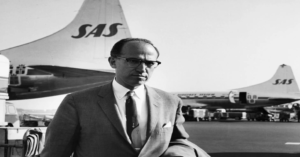
The rhythmic whoosh-clank haunts him first.
Jonas Salk walks through a Pittsburgh hospital ward in 1951. Rows of iron lungs—gleaming metal sarcophagi—hold children alive by artificial breath. Small faces peer out through mirrors angled above them. A nurse adjusts a rubber collar around a boy’s neck. His eyes lock with Jonas’s. Help me, they scream without sound.
That night, Jonas doesn’t sleep. He hears the machines in his dreams.
Jonas Salk: The Man Who Gave Away the Sun
├── The Whispering Wards
│ └── 1951 hospital visit; haunted by iron lungs and children’s suffering
├── The Sewing Needle and the Microscope
│ ├── Dora teaches Hebrew; early roots in compassion and healing
│ └── Connects stitching fabric to scientific discovery
├── The Argument That Changed History
│ ├── 1947 skepticism from peers (Sabin)
│ └── Donna and Dora’s influence helps him persevere
├── The Vaccine in the Refrigerator
│ ├── 1953: Serum development
│ ├── Personal risk—injecting family
│ └── Faith and fear during testing
├── The Sound of Silence
│ ├── April 12, 1955—Vaccine success announced
│ └── Jonas weeps in private, overwhelmed by impact
├── “Patent the Sun?”
│ ├── Media frenzy post-success
│ ├── Decision to not patent vaccine
│ └── Symbolic moral stand over wealth
├── The Shadow: When Hope Broke
│ ├── Cutter Laboratories’ flawed batches
│ ├── Personal confrontation with tragedy (Susan)
│ └── Recommits to purifying the vaccine
├── The Cathedral by the Sea
│ ├── 1963: Building the Salk Institute with Kahn
│ └── Vision of open, collaborative science
├── The Picasso in His Kitchen
│ ├── 1970: Relationship with Françoise Gilot
│ ├── Artistic philosophy and personal life
│ └── Love between creators with shared values
├── The Last Test Tube
│ ├── 1995: Salk’s final days
│ └── IPV validated globally—his work endures
├── Why His Heart Still Beats
│ ├── Modern crises: insulin pricing, corporate greed
│ ├── Salk as moral compass
│ └── Lasting global gratitude and influence
└── The Real Vaccine He Gave Us
├── Beyond polio—healing the system
├── Open science and human-first values
└── Call to action: “Be light”
The Sewing Needle and the Microscope
His mother Dora’s hands are calloused from stitching blouses in their East Harlem tenement. At night, she traces Hebrew letters in a book with Jonas.
“Tikkun olam, Jonas,” she whispers. “To heal the world. This is why we came.”
Years later, in a NYU dissection lab, Jonas slices through tissue. The formaldehyde burns his eyes. He thinks of Dora’s needle piercing fabric. Science is stitching too, he realizes. Sewing shut wounds we can’t yet see.
The Argument That Changed History
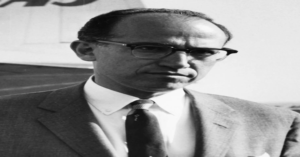
1947. His wife Donna finds him slumped at the kitchen table, polio data strewn like fallen leaves.
“They laughed at me today, Donna. Sabin called my killed-virus idea ‘quackery.’”
She pours tea. “Remember Dora? When you told her viruses were too small to fight?”
Jonas smiles faintly. His mother had scoffed: “Feh! You think God only lives in big things?”
Donna squeezes his hand. “Prove them wrong.”
The Vaccine in the Refrigerator
April 1953. The experimental serum glows amber in vials. Safe in monkeys. But humans?
“Who volunteers first?” his team asks.
Jonas takes three vials home. Places them beside the milk bottle in the Frigidaire.
His sons—Peter (9), Darrell (6), Jonathan (3)—chase each other through the hallway. Their laughter cuts him. That night, he tells Donna: “I can’t ask others what I won’t do myself.”
She doesn’t flinch. Rolls up her sleeve.
“Do the boys too. If it works, we save millions. If it fails…” Her voice cracks. “We face it together.”
When the needle pierces Jonathan’s plump arm, Jonas tastes bile. This is how faith feels, he thinks. Terrifying.
The Sound of Silence
April 12, 1955. 10:20 AM.
Jonas hides in a Michigan lab basement as Dr. Francis announces results to the world. Upstairs, cheers shake windows. Down here—silence. He grinds a cigarette into the floor.
Click. The phone.
“Jonas?” It’s Donna. He hears sobs. Not hers—a crowd’s.
“It worked, darling. It really worked.”
For thirty seconds, Jonas Salk says nothing. The man who conquered polio is weeping too hard to speak.
“Patent the Sun?”
Reporters swarm him. Flashbulbs pop like fireworks.
“Dr. Salk! Who owns the vaccine? You’ll be richer than Rockefeller!”
Jonas blinks. Images flood him:
- Dora’s threadbare coat
- The iron lung boy’s eyes
- Jonathan’s trusting smile as the needle went in
“There is no patent,” he says softly. “Could you patent the sun?”
Pharmaceutical executives stare in disbelief. He just gave away a $7 billion fortune.
The Shadow: When Hope Broke
May 1955. Cutter Laboratories ships bad batches.
Jonas stands at a hospital bed in Oakland. Susan, age 6, is paralyzed from a shot he designed. Her mother slaps him. Hard.
“Murderer!“
He doesn’t block it. Takes the sting.
“I’m so sorry,” he whispers to Susan’s still form. “I failed you.”
For months, he sleeps in his lab. Perfecting purification. Haunted by small breaths in iron lungs.
The Cathedral by the Sea
1963. La Jolla cliffs. Salt wind whips Jonas’s hair as he stares at blueprints. Architect Louis Kahn points to concrete vaults.
“They’ll call it your monument.”
Jonas shakes his head. “Monuments are for endings. This is a cradle.”
He dreams of scientists here—Crick studying DNA, poets debating physicists—all chasing cures in light-flooded labs. No locked doors. No patents. Just humans reaching.
The Picasso in Jonas Salk Kitchen
1970. Françoise Gilot—artist, Picasso’s fierce ex-lover—stirs coq au vin in Jonas’s kitchen. He watches her paint-splattered hands.
“Why me, Françoise? I’m just a lab rat.”
She laughs. “Jonas, you gave away the sun. Picasso kept every scrap. I know which one’s art.”
They marry quietly. At night, he scribbles equations; she sketches his profile. Two creators mending the world different ways.
The Last Test Tube
June 1995. Age 80.
Jonas lies in a hospital bed, heart failing. Outside, children shriek in a pool. Polio-free shrieks.
His lab assistant rushes in with a fax. “Sir—the WHO! They’re switching back to your IPV globally! Sabin’s vaccine is causing outbreaks… Yours will finish it!”
Jonas touches the paper. Smiles.
“Good… That’s good.”
His last breath is a sigh of release. The iron lungs fall silent forever.
Why Jonas Salk Heart Still Beats
Today, as drug companies price-gouge insulin, as billionaires rocket to space, remember Jonas:
- Who chose poverty over patents
- Who injected his own children to spare yours
- Whose “failed” vaccine now saves millions as polio’s endgame weapon
In a Nairobi slum, a health worker gives an IPV drop. The vial bears no name—just WHO logos. But the mother whispers:
“Salk.“
She knows.
The Jonas Salk Gave Us
Jonas didn’t just kill a virus. He inoculated us against a lie: that profit drives progress.
Jonas Salk legacy?
Every time a scientist shares data openly…
Every time a researcher chooses people over patents…
Every time we remember that healing is holy—not a transaction.
The sun was his blueprint.
Now go be light.
Edward Jenner: The Father of Vaccination & Smallpox Eradication
The Boy Who Hated Inoculation
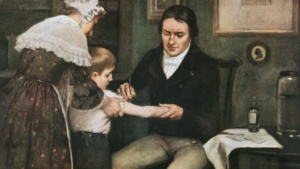
Eight-year-old Edward Jenner lay shivering on a straw-stuffed mattress, the damp English chill seeping through his nightshirt. Moonlight slipped through the shutters, illuminating jars of leeches on the dresser. It was 1757, and he’d just undergone variolation – the dreaded smallpox ritual. For three torturous weeks, he endured bloodletting, near-starvation diets, and solitary confinement in this darkened room. The village surgeon had warned: “Too much light or rich food will anger the pox.” Edward’s small frame burned with fever as the inoculation site festered. When the maid finally opened the shutters weeks later, he squinted at sunlight like a newborn. The experience left him frail for months, with deep emotional scars that would shape his life’s work. Years later, as a country doctor, he’d feel his throat tighten watching children clutch their parents’ skirts before facing the same ordeal.
The Milkmaid’s Hands
Jenner moved through Gloucestershire with a naturalist’s curiosity – stopping to sketch birds, collect fossils, and chat with farmers over cider. But it was in the misty dawn pastures that he made his greatest discovery. While fashionable London physicians dismissed country lore as “peasant superstition,” Jenner noticed what others ignored:
- Milkmaids like rosy-cheeked Sarah Nelmes and freckled Lucy Clifton bore smooth skin while merchants’ daughters carried pockmarked faces like cracked porcelain.
- Old Farmer Brewer winked as he declared: “My lassies get the cowpox? Blessin’ in disguise! Never seen one marked by the Devil’s Kiss after.”
- During the terrible outbreak of ‘87, Sarah Nelmes nursed six siblings through fever-soaked sheets while untouched by the plague ravaging their cottage.
One October morning in 1795, Jenner crouched beside Sarah in Blossom the cow’s stall. He gently turned her work-roughened hand, studying the amber-filled blisters. “Does it pain you much, child?” he murmured. Sarah shrugged, hay clinging to her apron: “Nay, sir. Just itches like nettle-rash. Better than the grave, eh?” Her laughter echoed in the barn as Jenner’s mind raced. In that earthy moment – the scent of warm milk and manure hanging thick – a revolutionary thought took root: Could this humble cowpox be God’s own shield against death?
The Agonizing Experiment
May 14, 1796. Jenner paced his study, a glass vial slick with Sarah’s cowpox pus growing warm in his trembling hand. Through the window, he watched 8-year-old James Phipps chasing dragonflies in the garden – his gardener’s only son. Catherine, Jenner’s wife, set tea beside his untouched notes: “Edward… is this wise?”
He nearly shattered the vial that night. What right had he to gamble this child’s life? Yet he remembered Mary Wortley, the miller’s daughter – buried last spring, her coffin small as a violin case.
At dawn, he called James inside. With hands steadied by desperation, Jenner made two shallow scratches on the boy’s freckled arm. The viscous fluid glistened as he whispered: “Be brave, lad.”
For nine days, Jenner barely slept. He pressed his ear to James’ door each night, dreading the rattle of labored breathing. When fever came, Jenner sat vigil, cooling the boy’s brow with lavender water. At the crisis hour, James dream-murmured: “Don’t let the spotted monster get me, sir…”
Recovery brought no relief. That July, Jenner faced the unthinkable: expose James to real smallpox. As he lifted the lethal lancet, his vision blurred with tears. The memory of his own childhood isolation room rose like a specter. Later, he’d confess in his journal: “I felt Creation’s judgment upon me should this fail.”
When James scampered off to play after the second inoculation – cheeks plump, eyes bright – Jenner collapsed at his desk. The dry sobs that shook his shoulders weren’t triumph, but release: No child should suffer as he had.
The Whisper Campaign
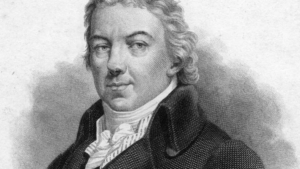
Victory? The storm was just beginning.
- Satirical cartoons plastered London: Gentlemen sprouting horns, ladies lowing at opera houses. Pamphlets shrieked: “Vaccination turns children into beasts!”
- Clergy thundered from pulpits: “This is Satan’s work! God sends plagues to punish sinners!” A vicar spat at Jenner’s carriage.
- Rivals paid street criers to spread horror tales. Jenner’s own nephew, a fashionable Bath physician, published: “My uncle trades in peasant madness.”
Then came the catastrophe. Well-meaning Dr. Woodville’s contaminated vaccine killed six London infants in spring 1799. Mobs marched on Berkeley with torches. Stones shattered the Jenner’s dining room window as Catherine shielded their son. That night, Edward knelt in glass shards, gathering precious vaccine threads scattered across the floor.
His answer? He whitewashed the garden shed, painting above the door: “Temple of Vaccinia.” There, he vaccinated beggars for free – their calloused hands gripping his as the lancet pierced skin. When creditors circled, he sold his beloved violin. Catherine pawned her mother’s pearls.
Edward Jenner Quiet Triumphs
Christmas Eve, 1800: A snow-sealed letter arrived from Virginia. Thomas Jefferson’s elegant script glowed by firelight:
“You have erased from the calendar of human afflictions one of its greatest. Future generations will know by history only that the loathsome smallpox existed.”
Enclosed: a pressed magnolia petal.
June 1803: Jenner stood dockside at La Coruña, salt wind stinging his eyes. Aboard the María Pita, 22 orphan boys lined the rail – living vaccine vessels. He’d dried cowpox between glass like pressed flowers, praying humidity wouldn’t ruin it. As ship’s surgeon Francisco Balmis shouted orders, a small hand slipped into Jenner’s. Seven-year-old Benito, the “vaccine guardian,” whispered: “Will it hurt, Doctor?” Jenner knelt, fastening the boy’s coat: “Less than smallpox, son. You’re saving kingdoms.”
November 1805: Napoleon’s aide-de-camp snapped to attention in Jenner’s shabby parlor. The emperor’s decree crackled in his hands: “All English prisoners named by Dr. Jenner are released.” Later, Bonaparte would grumble to Talleyrand: “That milk-doctor! I can refuse him nothing.”
Edward Jenner Unseen Sacrifices
Behind the global hero Edward Jenner lived :
- Catherine hid ledgers showing an £800 debt—a fortune. She’d find Edward giving their last coins to vaccine couriers.
- Their son Robert’s 1820 death from tuberculosis left Jenner haunting the riverbank, sketching the same heron for hours.
- When Parliament’s £30,000 award finally came after seven years of lobbying, he’d already sold his library. The money cleared debts – nothing more.
In his final winter, Jenner sat wrapped in blankets, watching snow dust the Temple of Vaccinia. Letters from India lay unopened – news of 10,000 vaccinated. He whispered to his pet thrush: “If only it had come sooner… for all the Marys…”
Why Edward Jenner Still Matters
We remember him not for perfection, but humanity:
- He listened to milkmaids when Oxford dons scoffed. “The truth wears working-class boots,” he’d say.
- He embraced uncertainty, living his mentor John Hunter’s creed: “Don’t think; TRY!” even when terrified.
- He chose compassion over patents. “Knowledge is the sun,” he insisted. “Should one man own daylight?”
- He endured betrayal without bitterness. To a critic who later begged vaccine for his grandchild, Jenner sent it by fastest coach.
Today at the Edward Jenner Museum:
Visitors walk floors Jenner paced in worry. You can:
☑️ Trace initials “J.P.” – James Phipps’ grateful carving in the Temple wood
☑️ Touch Blossom’s hide – hair still coarse from Sarah’s brushing
☑️ Read Mrs. Arbuthnot’s 1802 note: “My Anne is well. No pocks. You gave me back the sun.”
“He taught us that heroes aren’t marble statues, but people who choose kindness in a world screaming for cynicism. His shed was a cathedral.”
– Dr. Sarah Parker, Museum Curator
Two centuries later, his legacy breathes in every school nurse’s office. When a child whimpers at a needle, they’re spared the coffin under the bed – because a country doctor wept over a gardener’s boy and dared to hope.
Beyond the Lamp: How Florence Nightingale Rewired Medicine and Power
Florence Nightingale: The Steel Beneath the Lamp’s Gentle Glow

You know her silhouette—the graceful figure bending over wounded soldiers, lamp in hand. But the real Florence Nightingale was no porcelain angel. She was a thunderstorm in petticoats,a data-obsessed revolutionary who shattered Victorian expectations and invented modern nursing through sheer, unyielding will. Let’s strip away the saintly myth to meet the woman who traded privilege for pus-stained bandages and turned compassion into
systemic change.
Prologue: The Crushed Corsage (1820-1844)
Florence at 7:
A wild-haired girl kneels in the mud at Embley Park, England. Her hands press a sparrow’s broken wing.
Servants scold: “A lady doesn’t soil her dress!” Her mother sighs: “Why can’t you be proper like your sister
Parthenope?”
The Cage:
- Gilded Prison: Silk gowns, Italian tours, suitors like poet Richard Monckton Milnes
- Secret Hunger: Hoarding government health reports under her mattress
- The Vision (1837): “God called me in a dream. Not to marry. To serve.”
Family Fury:
“Would you disgrace us? Nursing is for drunkards and whores!” — Aunt Mai
She collapses. Diagnosed with “hysteria.” Doctors prescribe:
- Leeches to the groin
- Opium-laced “calming syrups”
- Forced water immersion
Her rebellion? Secretly learning hospital sanitation notes in German.
Breaking Free: Scandal in Kaiserwerth (1845-1853)
The Escape:
At 25, Florence fakes a “rest cure” in Germany. In reality, she enters Kaiserwerth Deaconess Institute—a hospital run by Protestant nuns.
Shock:
- Filth: Pus-soaked rags reused on patients
- Pain: Amputations without anesthesia
- Humanity: A dying prostitute clutching her hand: “You see me. No one sees me.”
Transformation:
| Victorian “Lady” | Florence at Kaiserwerth |
|---|---|
| Gloves at dinner | Elbow-deep in gangrene |
| Parlor small talk | Demanding autopsy reports |
| Piano practice | Sketching sewer systems |
She returns home—rejected.
“You smell of death,” her mother weeps. “No man will ever want you now.”
Crimea: Hell’s Classroom (1854-1856)

The Scutari Horror:
Turkey, November 1854. Florence arrives with 38 nurses. The British Army hospital is a converted cesspit:
- Sewage seeping under cots
- Fleas swarming on rotting wounds
- Men drinking cholera-tainted water because the tea ration ran out
The “Angel” Myth vs. Reality:
- The Lamp: A 4-pound Turkish fanoos (brass lantern) she hauled through freezing corridors.Not a dainty vase—a 4-pound Turkish fanoos (brass lantern).
- The Night Rounds: Not gentle comfort—emergency triage by lamplight: “This one lives—clean his maggots. That one dies—give him morphine.”
- The Enemy: Not just war wounds— typhus, cholera, and bureaucratic sadism
Her War Tactics:
- Scrub Brigade: Forced surgeons to wash hands in chloride of lime
- Data Bomb: Recorded how 16,000 of 18,000 deaths were from disease, not bullets
- Psychological Warfare: Wrote to The Times exposing generals: “These men are murdered by red tape.”
A Soldier’s Truth:
“When all others fled the stench, Miss Nightingale knelt. She held my hand as the fever burned. Not an angel. A general.” — Pvt. Thomas Murphy, 4th Dragoons
The Real “Lady with the Lamp”: Steel & Science
Beyond the Icon:
That famous portrait? A Victorian fantasy. Real Florence at 34:
- Hair cropped short (typhus-infested lice)
- Face gaunt from near-starvation (she fed patients first)
- Dress stained with blood, iodine, and political fury
Her Forbidden Innovations:
- Patient Diaries: Noting how morale affected recovery
- Statistical Rose Diagrams: Color-coded death charts to shame Parliament
- “Nightingale Wards”: Airy, sunlit rooms with 30-foot windows (still used today)
The Cost:
Collapsed in Crimea (1855). Diagnosed with “Crimean Fever” (likely brucellosis). Chronic pain imprisoned her for 54 years.
Bedridden General: The Invisible War (1857-1910)
The London Attic:
Confined to her bed at Park Street, she became:
- A Data Assassin: Writing 200+ pamphlets exposing sanitation crimes
- A Master Manipulator: Training protégés like Dr. Sutherland to lobby Parliament
- An Unseen Architect: Designing hospitals from India to America via letters
Tactics from the Mattress:
- Poison Pens: “Your laziness kills more than Russian cannon.” — Letter to War Secretary Sidney Herbert
- Economic Blackmail: Proved cleaner hospitals saved taxes (“Every corpse costs £36!“)
- Feminist Subversion: Funded scholarships for poor nurses —never putting her name on them
Her Contradictions:
- Championed statistics but dismissed germ theory (“Pasteur’s ‘little beasts’ are fantasy!”)
- Demanded nurses’ education but called women “incapable of abstract thought”
- Saved soldiers but opposed anesthesia in childbirth (“Pain is God’s design”)
“I stand at the altar of murdered men,” she wrote, “and while I live, I fight.”
Kitchen Table Revolution: How Florence Nightingale Changed Your Life
In Your Hospital:
- Call Buttons: Invented after a paralyzed soldier starved unheard
- Nutrition Charts: Her standardized diets (replaced rum rations with vegetable broth)
- Fire Escapes: Mandated after Scutari’s flammable corpse chutes
In Your Home:
- Window Screens: Her mosquito netting advocacy reduced malaria
- Soups as Medicine: Her “Recovery Broth” recipe (bone marrow + barley + thyme)
- Infographic Culture: Her pie charts birthed modern data visualization
Global Ripples:
- Japan: 10,000 copies of Notes on Nursing distributed after 1923 earthquake
- India: Trained midwives reduced maternal deaths by 40%(1870)
- Gaza (2024): Refugee camp nurses still using her wound-cleaning protocols
Florence Nightingale in the Mirror: The Human Cracked
Private Torments:
- Unrequited Love: Turned down politician Richard Milnes to remain “wedded to death”
- Guilt: Haunted by soldiers she couldn’t save (“I hear their cries in the wind”)
- Isolation: Banned from her sister’s funeral for “causing Mother’s stroke”
Her Last Rebellion (Age 90):
Blind, bedridden, she secretly funded a lesbian couple’s nursing school—defying Victorian morality.
“Never let tradition cage compassion.”she whispered before death.
Why Florence Nightingale Burns Brighter Today
In Modern Crises:
- COVID-19 ICUs: Nurses recording symptom patterns—her data legacy
- Refugee Camps: Prioritizing clean water over bandages—her Scutari lesson
- Nursing Strikes: Demanding safe staffing—her battle against “economical murder”
A Challenge to You:
- Be the Lamp: Next time you see suffering,Ask: “What system failed you?”
- Wield Data: Track a local issues with —garbage pileups, ER waits—with her rose diagrams
- Honor Her Complexity: Great Reformers aren’t saints—they’re stubborn, flawed, relentless
“I attribute my success to this: I never gave or took an excuse.”
Florence Nightingale: The Real Monument
Forget marble statues. Florence’s true memorials:
- The nurse skipping lunch to hold a dying patient’s hand
- The community health worker mapping cholera outbreaks in Lagos slums
- Your hands washing a child’s scraped knee—thoroughly, with soap
Florence Nightingale Truth:
The lamp wasn’t about light—it was about witness. In its glow, she forced the world to see:
Human dignity isn’t earned. It’s every person’s birthright—and every society’s duty to protect.
Hippocrates: The Father of Modern Medicine and His Enduring Legacy
Hippocrates: The Beating Human Heart Behind Modern Medicine

Indeed, you know that moment when a doctor leans in, really listens, and you feel seen? In fact, that quiet magic began with a sun-weathered Greek healer pacing beneath a plane tree 2,400 years ago. Therefore, forget marble busts and Latin phrases—let’s meet Hippocrates the man: flawed, fierce, and forever changing how we heal.
The Reluctant Legend: Sweat, Sandals, and Sleepless Nights
For example, picture Kos Island, 430 BCE:
A wiry 45-year-old man bursts into his clinic, sandals dusty from a 10-mile walk. Moreover, his linen tunic smells of thyme and sweat. “Lysandra’s fever broke!” he tells his students, eyes bright. “The willow bark tea worked.”
Clearly, this wasn’t a mythical demigod. Instead, this was Hippocrates:
- Exhausted caregiver: Up all night with a fisherman’s infected wound
- Grieving colleague: Still mourning a student lost to the Athens Plague
- Stubborn idealist: Turning away rich merchants who demanded “magic cures”
“Does the wind ask who owns the ship before filling its sails? I heal humans—not borders.”
The Revolution No One Saw Coming: Banishing Gods From the Sickbed
Before Hippocrates, illness felt like divine wrath. For example, epilepsy was “The Sacred Disease”—until, shockingly, Hippocrates did the unthinkable: he touched a seizing child during a temple ceremony.
Therefore, “Look!” he demanded, cradling the boy as priests recoiled.
“See how his left foot twitches first? How his eyes roll upward? This isn’t Poseidon’s anger—it’s a storm in the brain!”
Ultimately, his real genius? Reading nature’s diary:
| Symptom | Ancient Explanation | Hippocrates’ Observation |
|---|---|---|
| Cough in miners | “Hephaestus’ wrath” | “Dust coats their lungs like mud on a snail” |
| Depression in winter | “Persephone’s grief” | “Darkness drains the soul like a leaky cup” |
| Fevers after floods | “River god punishment” | “Stagnant water breeds invisible creatures of decay” |
Accordingly, his treatments sound deceptively simple:
- For melancholy: “Walk at dawn. Name three things that bring joy.”
- For insomnia: “Warm goat’s milk with honey. Count waves, not worries.”
- For grief: “Bake bread. Kneading dough mends the spirit.”
The Clinic Where Humanity Was Born: More Than a Plane Tree

Indeed, beneath that famous tree (still thriving on Kos today), Hippocrates created medicine’s first safe space.
A typical visit:
- The walk: “Stroll with me to the shore,” he’d say. As a result, movement eased confession.
- The silence: Consequently, he’d listen—truly listen—as a sailor described nightmares before mentioning his cough.
- The hands-on exam: Therefore, calloused fingers pressing a swollen belly, smelling breath (“sour apples? Liver distress”), studying nail beds like maps.
“Healing,” he whispered to students, “happens when shame leaves the room.”
Shocking innovations for 400 BCE:
- Confidentiality: “What is said here stays between us and the cicadas.”
- Informed consent: Explaining bone-setting risks to a wincing farmer
- Trauma care: Holding a Spartan soldier’s hand as wine-cleaned linen stung his wounds
The Oath That Breathes: More Than Words on Papyrus
Indeed, forget rigid commandments. Instead, the original oath was a living conversation:
“Teacher,” a student might ask, “what if I can’t save someone?”
Hippocrates’ reply:
“Then you sit with them. You witness their courage. You learn from their body’s wisdom. That is no failure.”
Modern echoes in hospital corridors:
- When an ER nurse washes a homeless man’s feet—that’s the oath.
- When a pediatrician gets eye-level with a terrified child—that’s the oath.
- When a surgeon says, “I made an error”—that’s the oath.
His “Failures”: Where True Wisdom Lives
To be clear, Hippocrates made colossal mistakes. Nevertheless, his courage to adapt made him timeless:
- Prescribed pigeon dung for infections (spoiler: it caused gangrene)
- Blamed “wandering wombs” for anxiety (a myth harming women for centuries)
- Overlooked contagion: Believed plagues spread through “bad air” alone
Yet, his greatest teaching, surprisingly, emerged from humility:
“When you hear hoofbeats, don’t cry ‘centaurs!’ Question everything—even me.”
Students witnessed his growth:
- He stopped bloodletting after a blacksmith nearly bled out
- He revised his “melancholia” notes after meeting a joyful poet with dark moods
- He apologized to a midwife: “Your knowledge of birth shames my theories.”
Hippocrates Kitchen Wisdom That Outlived Empires
Hippocrates most practical legacy, in fact, lives in your home:
1. Food as Pharmacy (His Actual Recipes)
- Barley-Lentil Stew: Simmered with garlic (antibiotic) and parsley (iron-booster)
- Honey-Throat Coat: Raw honey + sage + lemon for coughs (still used in Crete)
- “Moon Cycle Tea”: Raspberry leaf + chamomile for menstrual cramps
2. Seasonal Rhythms
- Spring: Dandelion greens “to wake the blood from winter’s sleep”
- Summer: Watermelon rind poultices for sunburn
- Autumn: Roasted figs stuffed with goat cheese “for grounding”
- Winter: Bone broth with ginger “to melt icy joints”
3. Movement Medicine
“Walking is man’s best medicine” took literal form:
- Arthritis patients waded in tide pools (seawater’s magnesium eased pain)
- Anxious nobles dug herb gardens (“earth holds worry like a sponge”)
Why a Dead Greek Still Walks With Doctors Today
Meanwhile, in a Malawi refugee camp, a clinician smears honey on burns—Hippocrates’ protocol.
Likewise, in a Tokyo dementia ward, therapists use lyre music—his “sound medicine.”
Moreover, in Brazilian favelas, community health maps track flood zones—his “Airs, Waters, Places” reborn.
“He taught us,” says Dr. María Rivera (Mexico City ICU), “that the pulse under our fingers connects us to every healer who ever lived.”
Your Invitation to Practice Hippocrates Healing
No medical degree required:
- Become a climate witness: Note how fog affects your joints or pollen clouds your thinking
- Cook one ancient remedy: Try his “Dreamer’s Elixir” (warm milk + nutmeg + thyme)
- Heal through presence: Next time someone suffers, don’t fix—just be there. Say:
“Tell me where it hurts. I’ll listen.”
Hippocrates Final Thought:
To conclude, Hippocrates wasn’t perfect. He lost patients. He raged at ignorance. He wept over plagues he couldn’t stop. Nevertheless, in his relentless belief that every body matters, he gifted us something immortal:
Medicine isn’t about gods or geniuses. It’s about one trembling hand reaching for another in the dark.